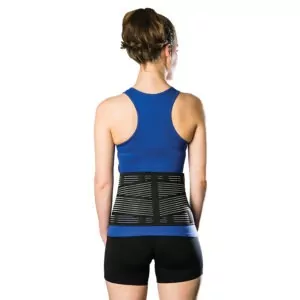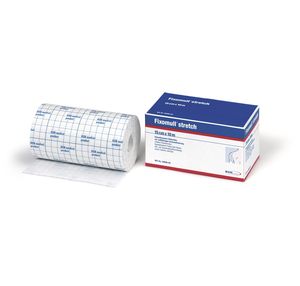Back Taping
Updated:
The following lower back taping techniques are designed to support the lower back, improve postural alignment and reduce stress on the spine during activity. They can be used for both the treatment and prevention of lower back injuries, particularly those associated with poor posture or caused by excessive bending forward, sitting or lifting activities (e.g. a lumbar disc bulge). For upper back taping techniques, refer to Posture Taping.
You should discuss the suitability of these taping techniques with your physiotherapist prior to using them. Generally, they should only be applied provided they are comfortable and do not cause an increase in pain, discolouration, pins and needles, numbness, itchiness or excessive redness of the back, bottom, legs, ankles, feet and toes.
What sort of tape should be used for back taping?
There are many different tapes and bandages available for use by physiotherapists and patients. However, when the purpose is to support the lower back and restrict undesired movement, adhesive, non-stretch (rigid) sports tape is generally most appropriate. (For back strapping, 38mm for smaller adults, adolescents and children, and 50mm for larger adults, are usually the most appropriate sizes). This should always be used in combination with hypoallergenic tape as an underlay, such as Fixomull.
Benefits of Back Taping
When used correctly, the following back taping techniques can help to:
- Decrease pain during sport or activity (especially bending or lifting activities)
- Improve sitting posture and decrease pain when sitting
- Aid healing of certain injuries
- Allow an earlier return to sport or activity following injury
- Reduce the likelihood of injury aggravation
- Prevent injuries during high risk activities (usually involving excessive bending forwards, sitting or lifting).
Indications for Back Taping
It is generally beneficial to use back taping in the following instances:
- With certain lower back injuries – such as a lumbar disc bulge where forward bending activities may aggravate the injury. (This should be discussed with the treating physiotherapist as certain injuries should not be taped).
- To prevent injury or injury aggravation – Back taping may be beneficial during activities or sports that place the lower back at risk of injury or injury aggravation (such as heavy lifting activities, gardening, repetitive bending forwards etc.)
When should I avoid Back Taping?
Back taping should be avoided in the following instances:
- If you have certain injuries (such as some fractures – this should be discussed with the treating physiotherapist)
- If you have a skin allergy to sports tape
- If the taping technique results in an increase in symptoms such as pain, ache, itchiness, discolouration, pins and needles, numbness, or excessive redness of the back, bottom, legs, ankles, feet or toes.
- If you have sensory problems
Weaning off back tape in general activity is usually recommended as posture, strength and range of movement improves and symptoms reduce. In these instances, however, taping during high risk activities (such as excessive sitting, driving, bending or lifting) may still be recommended.
Back Taping Techniques
The following lower back taping techniques may be used to provide support for the lower back and to improve posture. Generally it is recommended that any hairs are shaved off the back 12 hours prior to taping (to prevent painful removal of hairs and skin irritation). The skin should be cleaned and dried, removing any grease or sweat. Low irritant Fixomull tape should be applied as an underlay, to reduce the likelihood of skin irritation, with rigid sports tape over the top of this.
Back Taping
Begin standing or lying flat (on your stomach) in good posture. Your spine should be straight, and, if standing, your shoulders should be back and your chin tucked in (eyes looking straight ahead – figure 1).
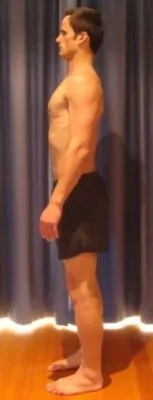
Anchors
Place a horizontal strip of tape along the top of the lower back and another one across the top of the pelvis (figure 2). These are used as fixation points for the other taping techniques.
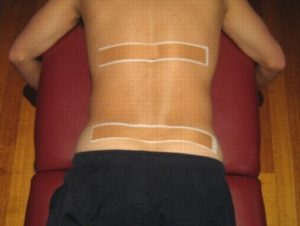
Vertical Lines
Maintain the spine in optimal posture either lying face down or in standing (figure 1). Begin this taping technique at the level of the top anchor by following the black arrows (figure 3). Conclude this taping technique at the level of the bottom anchor by following the white arrows (figure 3). Create 3 straight vertical lines with the middle line in the centre of the spine.
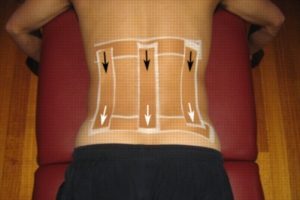
Diagonal Lines

Members Only ContentBecome a PhysioAdvisor Member to gain full access to this exclusive content. For more details see Become a Member. Already a member? Login Now
Re-Anchor

Members Only ContentBecome a PhysioAdvisor Member to gain full access to this exclusive content. For more details see Become a Member. Already a member? Login Now
Back Taping – Additional Support

Members Only ContentBecome a PhysioAdvisor Member to gain full access to this exclusive content. For more details see Become a Member. Already a member? Login Now
Removing the tape
Care should be taken when removing the tape to avoid injury aggravation or skin damage. The tape should be removed slowly, pulling the tape back on itself with pressure placed on the skin as close as possible to the line of attachment of the tape.Generally tape should be removed within 48 hours of tape application or sooner if there is any increase in pain or symptoms (including skin irritation or itchiness).
Back Taping Summary

Members Only ContentBecome a PhysioAdvisor Member to gain full access to this exclusive content. For more details see Become a Member. Already a member? Login Now
 Physiotherapy Products for Back Strapping
Physiotherapy Products for Back Strapping
To purchase physiotherapy products to assist with back strapping click on one of the above links or visit the PhysioAdvisor Shop.
 Back Exercises
Back Exercises
- View Lower Back Flexibility Exercises.
- View Lower Back Strengthening Exercises.
- View Basic Pilates Exercises designed to improve posture and core stability.
- View Basic Swiss Ball Exercises.
 Other Taping Techniques
Other Taping Techniques
 Find a Physio
Find a Physio
Find a physiotherapist in your local area who can help with back strapping.
 More Information
More Information
- Learn more about Posture.
- Read about Ergonomic Computer Set-Up.
- Read about Lumbar Disc Bulge.
Become a PhysioAdvisor Member
-
 Individual Membership (12 Months)$59.95 for 1 year
Individual Membership (12 Months)$59.95 for 1 year -
 Individual Membership (3 Months)$39.95 for 3 months
Individual Membership (3 Months)$39.95 for 3 months -
 Individual Membership (Yearly)$49.95 / year
Individual Membership (Yearly)$49.95 / year -
 Individual Membership (Monthly)$15.95 / month
Individual Membership (Monthly)$15.95 / month

Link to this Page
If you would like to link to this article on your website, simply copy the code below and add it to your page:
<a href="https://physioadvisor.com.au/health/taping-techniques-upper-body/back”>Back Taping – PhysioAdvisor.com</a><br/>PhysioAdvisor offers quality physiotherapy information on Lower Back Taping for lower back injuries.
Return to the top of Back Taping.

